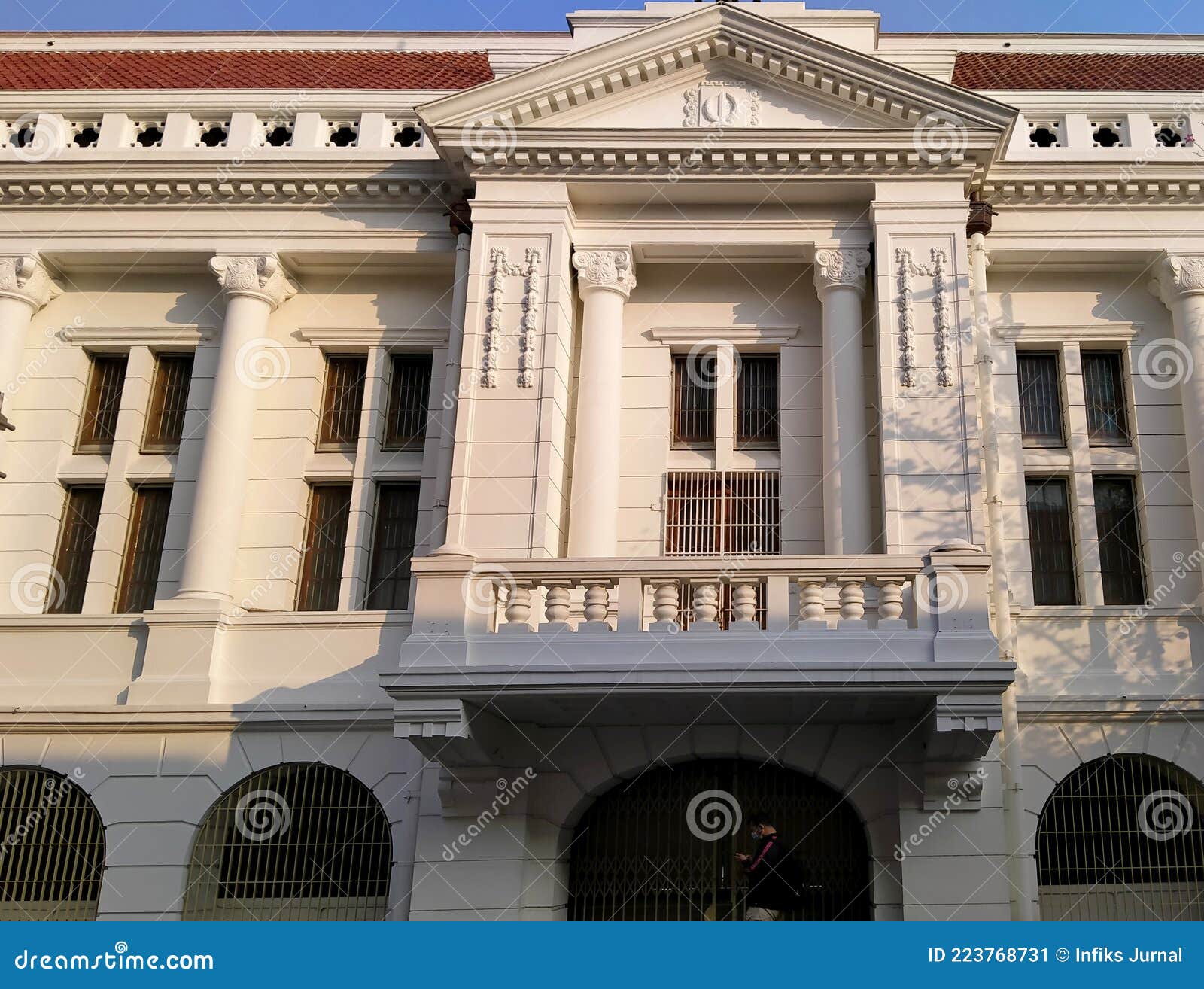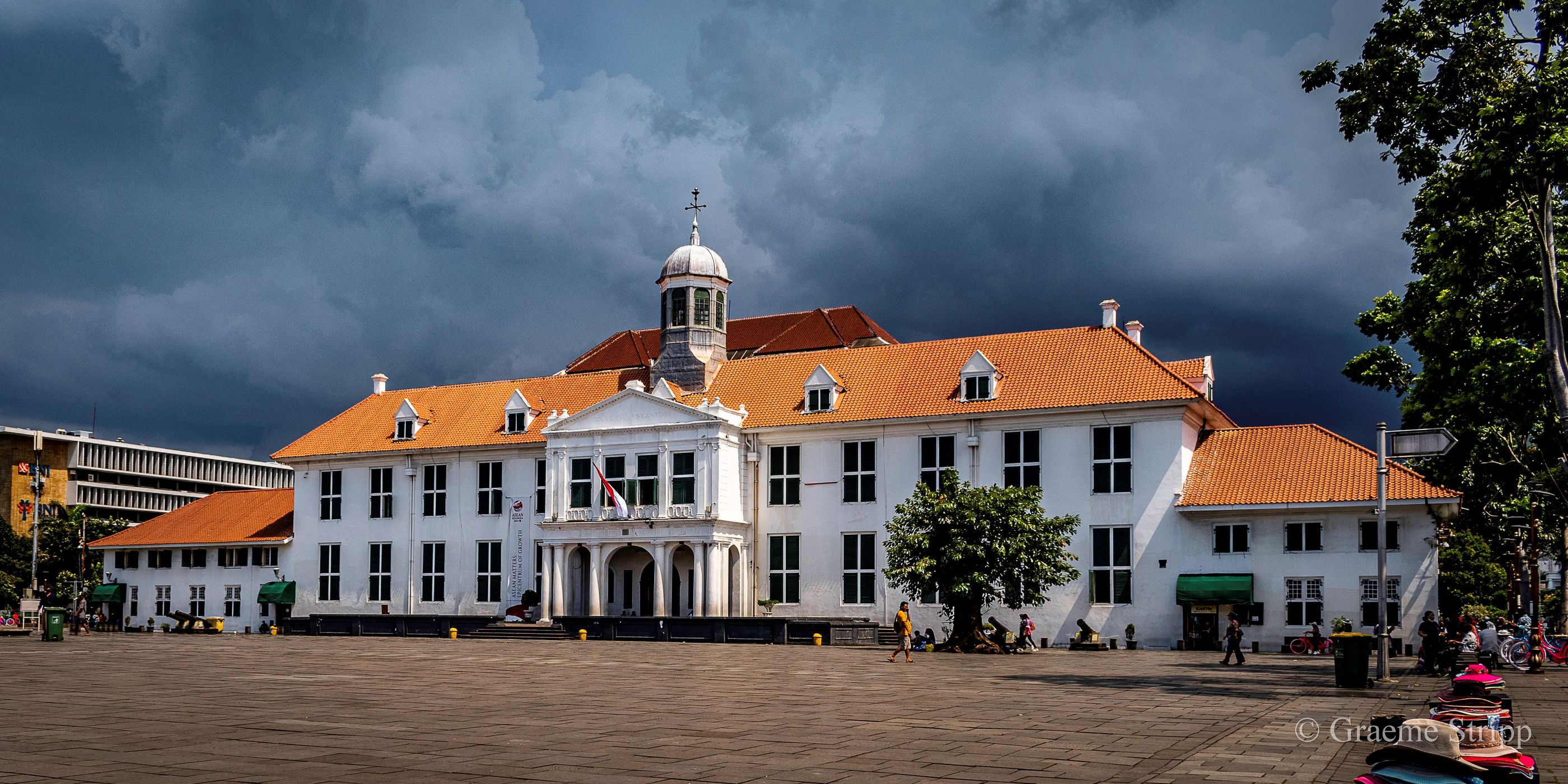As one of Jakarta's must-visit sites, Kota Tua, is steeped in historical significance and cultural charm. Its colonial-era architecture and blend of cultures have made it a captivating destination.
Editor's Note: Discover The Enchanting Kota Tua: Jakarta's Historical Old Town was published today, revealing the rich past of Jakarta through its surviving colonial landmarks.
Through extensive research, analysis, and compilation of information, we present you with this detailed portrayal of Kota Tua. Our aim is to provide our readers with a comprehensive guide to this fascinating historical district.
Key Differences
| Jakarta's Kota Tua | Other Historic Sites |
|---|---|
| Endearingly known as "Old Batavia," a reminder of Dutch colonial rule | Typically associated with pre-colonial or ancient history |
| A blend of architectural styles, showcasing Dutch, Chinese, and Indonesian influences | Often characterized by a single architectural style or period |
| Home to important landmarks such as Fatahillah Museum, Jakarta Cathedral, and Chinese temples | May have a specific historical focus, such as military history or religious significance |
Main Article Topics
FAQs
Discover common questions and answers regarding the alluring Kota Tua, Jakarta's captivating historical district.

Kota Tua, Jakarta, Indonesia - (06-10-2021) : Front View of the - Source www.dreamstime.com
Question 1: What are the most significant attractions within Kota Tua?
Kota Tua boasts an array of captivating attractions, including the iconic Fatahillah Museum, the majestic Red Town Hall, and the evocative Cafe Batavia, which transports visitors back to the colonial era.
Question 2: Is Kota Tua a bustling commercial center or a primarily historical district?
Kota Tua harmoniously blends its historical roots with contemporary commercial activity. While preserving its rich heritage, it also plays a crucial role in the city's economy, featuring numerous businesses and eateries.
Question 3: What is the optimal time to visit Kota Tua for the most favorable weather conditions?
Jakarta's dry season, typically occurring from April to October, offers the most favorable weather conditions for exploring Kota Tua, ensuring clear skies and comfortable temperatures.
Question 4: Are there guided tours available to enhance the exploration of Kota Tua?
Guided tours are readily available, providing an immersive experience of Kota Tua's historical landmarks. Knowledgeable guides narrate the captivating stories behind each site, enriching the exploration.
Question 5: What precautions should visitors take to ensure a safe and enjoyable experience within Kota Tua?
As with any urban setting, visitors are advised to maintain situational awareness, safeguard their belongings, and respect local customs. By embracing these measures, they can fully immerse themselves in Kota Tua's vibrant atmosphere.
Question 6: Can photography enthusiasts capture images within Kota Tua without any restrictions?
Photography is generally permitted within Kota Tua's public areas, allowing visitors to capture the district's architectural beauty and historical charm. However, it is essential to respect the privacy of others and refrain from using flash when photographing individuals or within religious sites.
Kota Tua, with its captivating blend of history and modernity, beckons explorers to uncover its hidden gems. Embark on a journey through time within this enchanting district, where the past harmoniously intertwines with the present.
Proceed to the next section to delve deeper into the captivating allure of Kota Tua.
Tips
To fully appreciate the captivating history and charm of Kota Tua, consider these valuable tips:
Tip 1: Immerse Yourself in History:
Explore the fascinating museums and historical sites like the Jakarta History Museum and the Fatahillah Museum, which house artifacts and provide insights into the city's rich past.
Tip 2: Admire the Dutch Colonial Architecture:
Marvel at the grand buildings and cobblestone streets that reflect the architectural heritage of Dutch colonialism. The Stadhuis (City Hall) and the Mercantile Exchange are iconic landmarks worth exploring.
Tip 3: Sample Local Delicacies:
Indulge in the savory flavors of Kota Tua's traditional cuisine. Visit the renowned Café Batavia for authentic Indonesian dishes or savor a cup of traditional coffee at Kopi Tak Kie.
Tip 4: Explore the Unique Shops:
Discover hidden gems and support local businesses by browsing the charming shops offering souvenirs, antiques, and other unique items. The Alfa Art Centre is a must-visit for contemporary Indonesian art.
Tip 5: Capture the Ambiance:
Carry a camera to capture the picturesque scenes of Kota Tua. The cobblestone streets, vintage buildings, and vibrant street life provide an endless source of photo opportunities.
Tip 6: Plan Your Visit:
To avoid crowds, aim to visit during weekdays or early mornings. Consider booking guided tours to delve deeper into the historical significance of the area.
Tip 7: Embrace the Extravagance:
Dress up in period attire to enhance your experience. The traditional Dutch colonial costumes create a truly immersive and unforgettable adventure.
Tip 8: Respect the Environment:
Help preserve the historical charm of Kota Tua by disposing of litter responsibly and respecting the cultural heritage. Your contribution ensures the preservation of this enchanting destination.

Old Church Buildings Peeking through Historical Buildings at Kota Tua - Source www.dreamstime.com
By embracing these enriching tips, you will have the opportunity to experience the captivating history and charm of Discover The Enchanting Kota Tua: Jakarta's Historical Old Town to the fullest.
Discover The Enchanting Kota Tua: Jakarta's Historical Old Town
Jakarta's Kota Tua, the enchanting historical heart of the metropolis, beckons travelers with its rich heritage, captivating architecture, and vibrant urban tapestry. Here, we unravel the six key aspects that make Kota Tua an unforgettable destination:
- Historical Significance: A testament to Jakarta's colonial past.
- Architectural Heritage: A fusion of Dutch, Chinese, and Indonesian design.
These aspects intertwine to form a captivating narrative. Kota Tua's historical significance resonates in its cobblestoned streets, reminiscent of colonial rule, while its architectural heritage manifests in iconic buildings like the Batavia Stadhuis and the Chinese temples. Its strategic location on the Sunda Kelapa harbor brings to life the maritime heritage and economic importance that once made Jakarta a thriving port city. Today, Kota Tua stands as a testament to the resilience and cultural tapestry of Jakarta, attracting history enthusiasts, architecture buffs, and curious travelers alike.

Old Town Jakarta, Kota Tua Jakarta, Indonesia - Source www.locationscout.net
Discover The Enchanting Kota Tua: Jakarta's Historical Old Town
The enchanting history of Jakarta's Kota Tua is a true testament to the city's rich cultural heritage. European colonial influences have left a lasting impression on its architecture, resulting in a captivating blend of cultures from across the globe. As a component of "Discover The Enchanting Kota Tua: Jakarta's Historical Old Town", the exploration of the connection between these historical influences and the city's modern-day identity is of paramount importance.
The legacy of Dutch colonialism is particularly evident in the city's architecture, with many of the original buildings having been preserved and restored. The old town area provides visitors with a unique opportunity to step back in time and explore the city's colonial past. The Jakarta History Museum, located within the old city, offers a fascinating insight into the city's diverse heritage and is a must-visit for tourists and history enthusiasts alike.
The practical significance of this investigation lies in the opportunity to understand the profound impact that history has had on the shaping and growth of modern-day Jakarta. As the city continues to evolve, preserving and understanding its historical roots is essential in ensuring that the unique character of Kota Tua is not lost.
| Key Insight | Practical Significance |
|---|---|
| Analysis of the connection between historical influences and present-day identity | Preservation and understanding of historical roots for sustainable future development |
| Exploration of the ways in which history has shaped the city's architecture | Preservation and adaptive reuse of heritage buildings for cultural, economic, and social benefits |
| Examination of the impact of colonialism on the city's cultural identity | Promotion of cultural diversity and intercultural dialogue |
Conclusion
The exploration of "Discover The Enchanting Kota Tua: Jakarta's Historical Old Town" has shed light on the profound connection between the city's rich multicultural past and its present-day identity. The preservation and understanding of its captivating historical heritage is fundamental to the sustainable and inclusive growth of Jakarta, fostering a sense of belonging and cultural pride while attracting visitors from across the globe. As the city continues to progress, it is imperative to strike a balance between modernization and heritage conservation, ensuring that Kota Tua's unique character and legacy are preserved for generations to come.
Through engaging with the historical essence of Kota Tua, we not only appreciate its architectural beauty but also gain invaluable insights into the intricate tapestry of Jakarta's past and present. Let us all be ardent advocates for preserving and cherishing this enchanting treasure for the benefit of current and future generations.